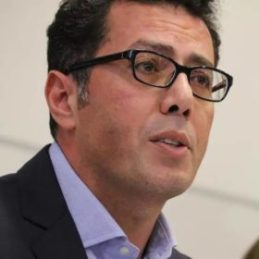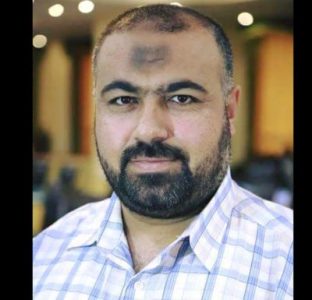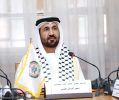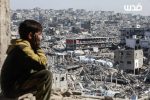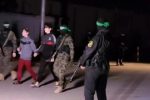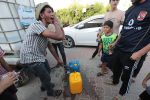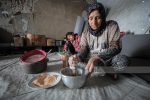For the past 77 years, Palestinians have experienced various dichotomies that are inherent to life under Occupation. Sometimes reconcilable, but often not, some are unique to the current situation, and some are not.
For example, resilience and despair are normal reactions to decades of ethnic cleansing by the Zionist state.
As a communal trait, sumoud has served the Palestinian resistance and contributes to their refusal to leave the homeland, even in the wake of increased collective punishment by the Israeli military since October 7.
While Israel’s aggression in Gaza and historic Palestine has reached near-historic levels, there is a danger in romanticizing Palestinian resilience, as many are wont to do. Doing so transforms the people into a well-worn cliché, plus it requires of them super-human strength that no one should have to bear.
Some oppositions are impossible to reconcile. For example, Israel’s origin story erases the reality of the Nakba, as settler colonial narratives often do. As poet Dareen Tatour explains, the Zionists celebrate what they consider their Independence Day in early May by holding parties replete with fireworks and celebratory picnics.
On the other hand, Palestinians “mourn this day as [their] Nakba,” Tatour makes clear, “the start of an ethnic cleansing, the destruction of ‘their’ villages, and the creation of a refugee population.”
“We suffer in silence and pride and remain, despite freedom being only a dream,” Tatour concludes, thereby injecting hope and resilience into the formula of despair.
What cannot be reconciled are the two versions of history relating to ‘48, despite efforts by Zionists to do so.
Each year on May 15, Combatants for Peace (CFP) holds a Joint Nakba Remembrance Ceremony, this year focusing on “holding onto land, holding onto hope.”
Whose land, and whose hope? Those questions to not appear to have an answer beyond a vague reference to “process(ing)” each side’s “violent past.”
Herein lies the problem. There is an effort to find an equivalence in the resistance of the occupied, who have a legal right to resist, and the violence of the occupier, who does not have a right to commit genocide against the other.
Fascism has never been voted out of power, nor has it ever been overcome by the oppressed listening to the traumas of their oppressor. This notion is akin to advocating that the Jews in Warsaw ghetto should have invited the Nazis in for tea to listen to their stories, instead of rising up against their oppressors as they actually did.
The call goes on to label the “current bloodshed” as “another tragic chapter in a long history of conflict over this land.” Except that it is not a conflict because that implies two equal combatants, when in truth, Palestinians do not have near the weaponry as do the Israelis, thanks to the United States and other countries enabling what is really a genocide, not a conflict, that is ongoing to this day.
Moreover, the memorial refers to “breaking the cycle of violence” by listening to each other’s stories, when indeed there has been no “cycle” of violence, but instead ongoing ethnic cleansing carried out by the Zionist state.
Finally, CFP refers to a “commitment to reconciliation,” but even in South Africa, where there were truth and reconciliation hearings, that did not occur until after the end of apartheid. Israel has a long way to go, if ever, before reconciliation happens.
As for the future, those involved in Combatants for Peace hold a “vision of collective liberation, where the oppressed are free from domination and the oppressors are freed from the systems that bind them to violence.”
Nowhere in these few paragraphs does CFP use the word “genocide,” nor do these final words refer to “Zionism” as the system that must be ripped to pieces. Thus, participants leave the memorial each year feeling good about themselves for paying lip service to stopping the genocide that is never aptly named.
In a Facebook post, Haider Eid, Palestinian scholar, cultural activist, and music artist, defines “normalization” as a “means dealing with or presenting something that is inherently abnormal, such as oppression and injustice, as if it were normal.” CFP serves as one such project, as it involves establishing normal relations with the Zionist regime instead of supporting an Indigenous Palestinian led struggle for independence.
Elsewhere, Eid contends that cultural and normalization projects that have been carried out under the pretense of “understanding the other” or “convincing Israeli public opinion of [Palestinian] rights” have erroneously led to international opinion that Israel was “actively seeking peace.” Even worse, they weakened the boycott movement while allowing Israel to “whitewash its criminal past” by marketing itself as a “democratic and normal state.”
Rather than take an active stand against Israeli institutions, these tasks, Eid concludes, give participants a “false sense of satisfaction” that they were taking action by simply engaging in “dialogue” about common issues while ignoring the question of how to bring about freedom and justice for the Palestinian people.
CFP also sponsors a Joint Memorial, meant to bring together Palestinians and Israelis who are invited to jointly mourn their dead. Held annually on the eve of Yom HaZikaron (Israeli Memorial Day), the ceremony hosts participants who are united, the organizers claim, against the forces that seek to divide them.
Problematic for the reasons already mentioned, the Joint Memorial presents other issues outlined by Rabbi Brant Rosen in his weekly newsletter to members of Tzedek Chicago, an anti-Zionist congregation in Chicago.
Shared on Facebook, Rabbi Brant explains that Yom Hashoah (Holocaust Remembrance Day) was established by an act of the Israeli Parliament shortly after the founding of the Zionist State. Commemorated annually on April 27, it begins a week of mourning leading to Yom Hazikaron (Memorial Day), and ending with Yom Ha’atzmaut (Independence Day).
Thus, it serves to “promote the Zionist historical mythology” that saw the establishment of the state of Israel as a ‘rebirth,’ arising out of the ashes of the Holocaust, made possible by soldiers who fought in the War of Independence.
By ignoring the fact that the Zionist state was made possible by the dispossession of another group of people, the joint commemorations sponsored by CFP fail to bring together two incompatible groups of mourners.
Horrific as it was, the Holocaust happened in the past, so it cannot be used by the victims as justification to carry out their own genocide against another group of people. When the victims become the perpetrators of another unrelated crime, the two events can never be reconciled, no matter how much the Zionists choose to do so.
This reality continues to this day as Israelis carry out what they see as the end solution, the complete genocide and displacement of the Palestinian people.
Under threat of genocide, Palestinians experience a wide range of emotions: hope, despair, joyfulness, and sorrow, all reasonable reactions given the current context.
“What cannot be reconciled are dialogues between the occupied and the occupier, two groups with highly unequal status, especially now when one side is committing genocide against the other.
A third actor, perhaps, comes in the form of nature fighting back. Paradoxically, as Israel ramps up its campaign to annihilate all of Gaza to make way for Israelis to take control, another fire is burning in the forests that Zionists planted to make the land their own.
At a time when Israel is burning alive adults and children in Gaza, the West Bank, and Lebanon, Ronnie Kasrils explains, its own forests are burning courtesy of non-native trees planted by foreign donors on stolen land.
A veteran of South Africa’s anti-apartheid struggles, Kasrils notes that settlers planted trees to recreate their former landscapes, then “when the ethnic cleansing came, planted trees at a pace to cover up the scenes of butchery and demolition of hundreds of villages, hoping to obliterate any sign of a Palestinian presence.”
These forests, according to Kasrils, are an “apt symbol for the smoldering toxins within a failing Zionist system turning [into] ash.”
As Nakba Day approaches, the burning trees are a reminder that there is only one true narrative, as opposed to a “history of substitution, of silenced memory, of systematic forgetting,” i.e., a false narrative that the Zionists have imposed.
“The flames around Jerusalem remind us — perhaps unintentionally — that no people can be uprooted with impunity,” Mohamed El Mokhtar claims. “That the land, sooner or later, will speak again.”
–Benay Blend earned her doctorate in American Studies from the University of New Mexico. Her scholarly works include Douglas Vakoch and Sam Mickey, Eds. (2017), “’Neither Homeland Nor Exile are Words’: ‘Situated Knowledge’ in the Works of Palestinian and Native American Writers”. She contributed this article to The Palestine Chronicle.


